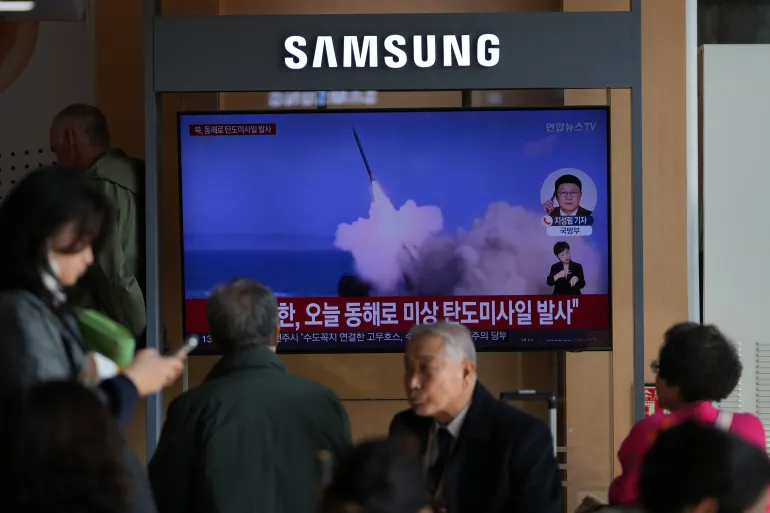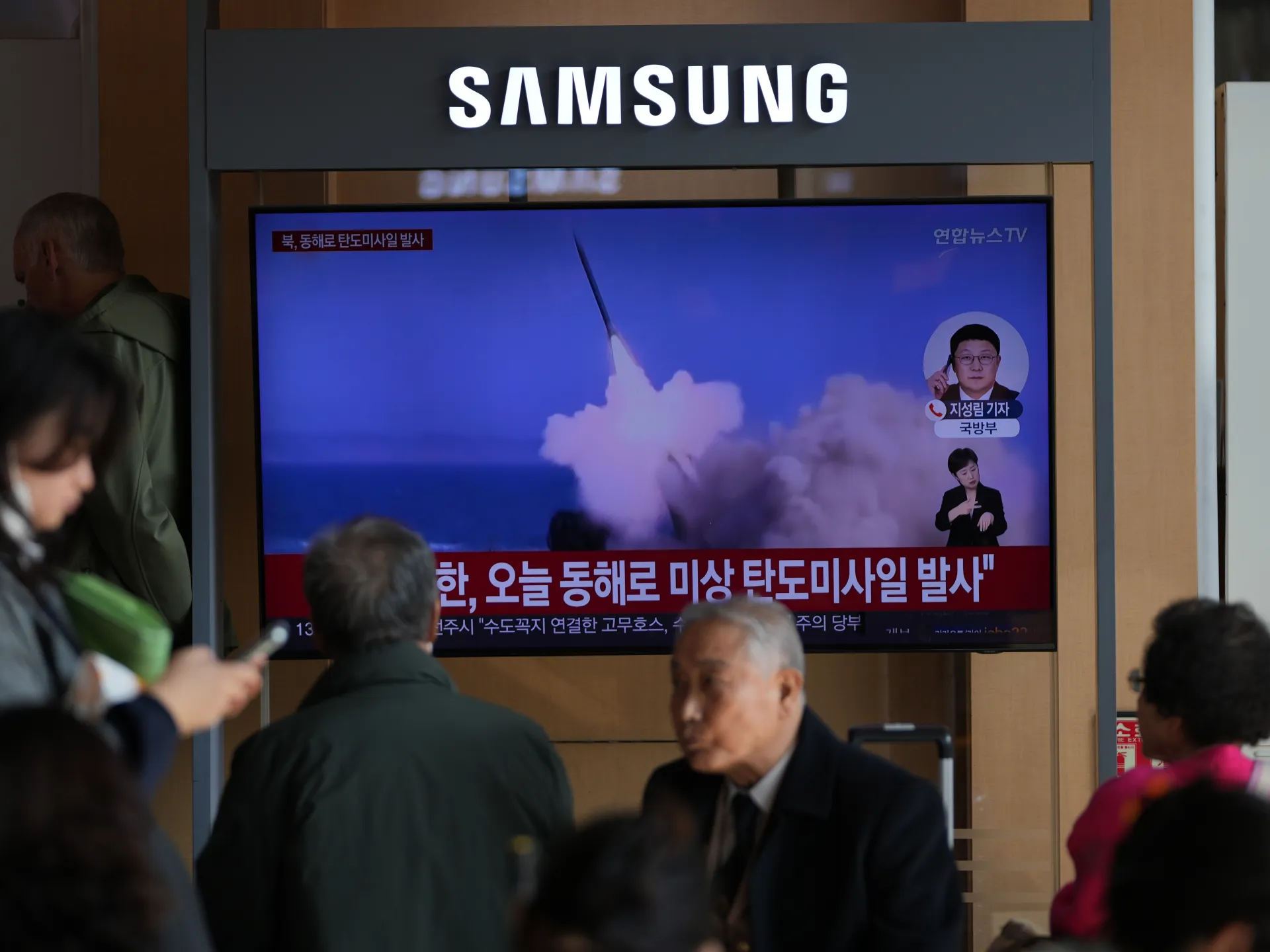N Korea threatens ‘offensive action’ as US aircraft carrier visits S Korea | Kim Jong Un News
North Korea issues warning as Washington and Seoul agree on strengthening military ties.
Published On 8 Nov 2025
North Korea’s defence minister, No Kwang Chol, has condemned the arrival of a United States aircraft carrier at a port in South Korea and warned that Pyongyang will take “more offensive action” against its enemies.
The minister’s warning comes a day after North Korea launched what appeared to be a short-range ballistic missile into the sea off its east coast.
Recommended Stories
list of 4 itemsend of list
“We will show more offensive action against the enemies’ threat on the principle of ensuring security and defending peace by dint of powerful strength,” the defence minister said, according to a report on Saturday by the North’s state-run Korean Central News Agency (KCNA).
“All threats encroaching upon the sphere of the North’s security” will become “direct targets” and be “managed in a necessary way”, South Korea’s Yonhap news agency also reported the defence minister as saying.
The missile launch on Friday followed after Washington announced new sanctions targeting eight North Korean nationals and two entities accused of laundering money tied to cybercrimes, and a visit to South Korea by US Defense Secretary Pete Hegseth.
Commenting on the visit by US and South Korean defence chiefs to the border between North and South Korea, as well as their subsequent security talks in Seoul, the North Korean defence minister accused the allies of conspiring to integrate their nuclear and conventional weapons forces.
“We have correctly understood the hostility of the US to stand in confrontation with the DPRK to the last and will never avoid the response to it,” No said, using the initials of the North’s official name, the Democratic People’s Republic of Korea.

According to KCNA, the defence minister made his comments on Friday in response to the annual South Korea-US Security Consultative Meeting (SCM) and the recent arrival of the USS George Washington aircraft carrier and the Fifth Carrier Strike Group at a port in Busan.
The arrival of the US strike group also coincides with large-scale joint military drills, known as Freedom Flag, between US and South Korean forces.
While in South Korea for the SCM talks this week, Hegseth posted several photos on social media of his visit to the Demilitarized Zone (DMZ) between the North and the South.
Hegseth said that the core of Washington’s alliance with Seoul would remain focused on deterring North Korea, although the Trump administration will also look at flexibility for US troops stationed in South Korea to operate against regional threats.
I visited the DMZ with my ROK counterpart, Minister Ahn, to meet the brave troops of the U.S., ROK, and UN Command that maintain the military armistice on the Peninsula.
Our forces remain ready to support President Trump’s efforts to bring lasting peace through strength. pic.twitter.com/Uy6gab0zwl
— Secretary of War Pete Hegseth (@SecWar) November 3, 2025
Pyongyang described the DMZ visit by Hegseth and his South Korean counterparts as “a stark revelation and an unveiled intentional expression of their hostile nature to stand against the DPRK”.
Pyongyang’s latest missile launch, which Japan said landed outside its exclusive economic zone, came just over a week after US President Donald Trump was in the region and expressed interest in a meeting with North Korean leader Kim Jong Un.
On Friday, the US said it was “consulting closely” with allies and partners over the ballistic missile launch.
“While we have assessed that this event does not pose an immediate threat to US personnel or territory, or to our allies, the missile launch highlights the destabilising impact” of North Korea’s actions, the US Indo-Pacific Command said in a statement.

